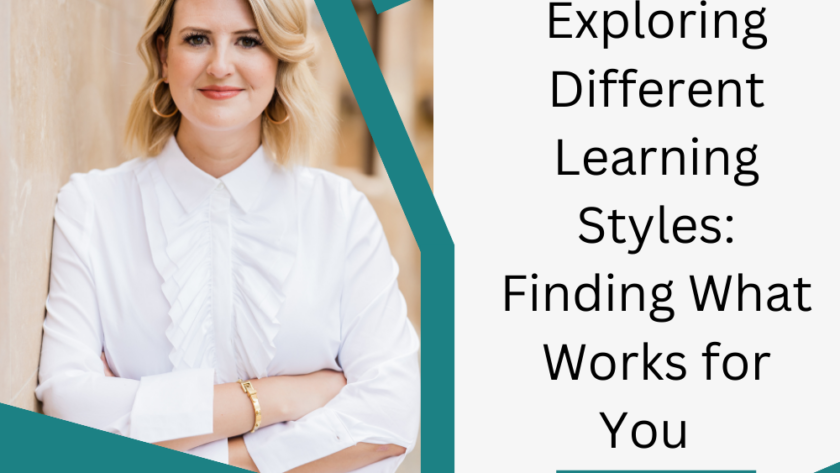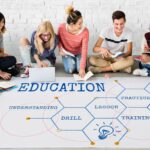Individual learning styles vary from each other, and some may even have a dominant way of learning. However, it is important to note that learning patterns can vary depending on the circumstances. There is no absolute right or wrong answer as to which style of learning is best, as a combination of techniques can be effective.
By discovering and understanding the learning style, we should employ techniques that enhance the speed and quality of knowledge in children. In education, there has been a significant emphasis on how teachers can better meet the needs of their students, and one effective approach is to familiarise themselves with different learning styles. When teachers have a deeper understanding of their students and how their minds work, they can more effectively facilitate learning.
Even if the term “learning style” is unfamiliar, most people generally know their preferred style. For example, some individuals may struggle to learn through auditory means but grasp concepts easily when they engage in physical activities. Others may enjoy listening to audiobooks but struggle with comprehension when reading printed materials. When we describe ourselves this way, we refer to our style of learning.
Sometimes, it becomes burdensome for teachers to accommodate different learning strategies in the initial stage with numerous responsibilities. However, this guide aims to provide insights into each style and suggest how teachers can adjust their teaching methods accordingly.
What are the various learning styles, and how do they work?

Every individual has a different way of learning information. Some individuals find it easier to grasp concepts visually, while others prefer hands-on experiences. This concept forms the basis of the learning theory, which suggests that individuals learn best when information is presented in alignment with their preferred style.
For instance, visual learners understand and retain information better when conveyed through images, graphs, and maps. On the other hand, auditory learners prefer learning through listening, such as attending lectures or engaging in discussions.
There are seven commonly recognized learning styles:
Visual Learners
They process information effectively through visual aids like images, graphs, and diagrams.
Auditory Learners
They learn best through sound and oral communication, benefiting from lectures, discussions, and audio recordings.
Kinaesthetic Learners
Also known as tactile learners, they comprehend information through hands-on activities and physical experiences.
Reading/Writing Learners
These individuals prefer learning through reading, writing, and organizing information in written form, excelling in written assignments and reading textbooks.
Social Learners
Thriving in group settings, they learn best through a collaborative learning environment, engaging in discussions, group projects, and interactions with peers.
Solitary Learners
Intrapersonal learners prefer working independently, benefiting from quiet, focused environments for self-study, self-paced activities, and individual projects.
Logical Learners
Logical learners excel in analytical thinking, reasoning, and problem-solving. They appreciate structured approaches, rational frameworks, and clear explanations when learning new concepts.
It’s important to understand that individuals might adapt to a combination of different styles of learning. Some experts argue these styles can evolve and are not fixed.
Teachers should try to utilize various teaching techniques such as visual aids, lectures, hands-on activities, group discussions, written assignments, and independent study options for transferring them to students. The key to offering diverse opportunities for students is to embrace the power of adaptive learning to maximize the outcomes.
Read: The Social Media Role in the Educational System
Tips to simultaneously support learners of all types
To maximize learning outcomes, incorporating multiple learning methods into lessons is highly effective. Since individuals often exhibit a combination of learnings, activities that integrate various approaches tend to yield the best results.
Many of the suggested activities provide benefits to learners of all types. By adding small tweaks to your lessons, you can easily cater to different learning types. Here are some ideas to achieve a balanced blend of all four learning styles within a class or activity:
Learning Centers
Set up multiple stations or centres in the classroom and divide students into groups. Each centre offers various activities, and students rotate among them. This approach benefits students of all learning types. Moving around the classroom fosters engagement even without a specific centre for kinaesthetic learners. Likewise, small group rotations naturally encourage discussion, benefiting auditory learners.
Providing Options
Whenever possible, offer students choices in their assignments or projects. Instead of assigning a traditional essay, present different options without explicitly aligning them with a specific learning style. Students will naturally gravitate towards the option that suits their preferred style best. For instance:
- Write an essay (appeals to reading/writing learners)
- Film a video (appeals to kinaesthetic learners)
- Create interesting posters or appealing multimedia projects (appeals to visual learners)
Headphones
Allow students to use headphones when working independently. This helps minimize distractions and enables learners of various styles to connect auditory information and their learning. Auditory learners benefit from this practice, especially when they need a quiet work environment.
Leveraging Technology
As technology has advanced significantly, we can use it to support student learning. A wide range of apps and websites cater to different types of education. For example, games incorporating visuals and sounds could assist visual and auditory learners, or engaging with devices through physical manipulation helps kinaesthetic learners.
By implementing these strategies, you can create a learning environment that engages students across different learning styles.
Let’s create inclusive and dynamic classrooms that empower all learners to excel!
Final words
Any kind of learning is not inherently right or wrong. It is simply a category of how different individuals process information. In traditional academic settings, those with a dominant reading/writing learning type may find it easier to succeed, leading to the perception of being a “good student.”
However, education has evolved to accommodate diverse styles for children to learn. In some of the top schools in Vadodara, teachers emphasize students’ preferred way of learning and understand that it can change over time. This benefits individuals in any educational context.




